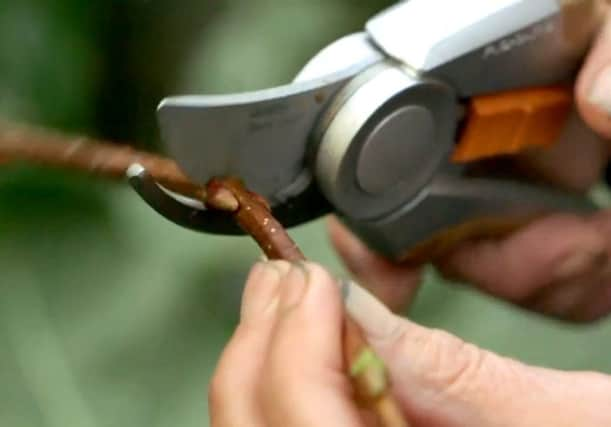BRIAN KIDD: Now is the perfect time to take your hardwood cuttings


The seeds were sown during the third week in August, but next year I must remember to sow them a week earlier. This will give us even more in autumn.
The swedes are the best ever this year. They were sown in cells if you remember and I will mention this again next May.
This week we are in the garden rather than the allotment.
Advertisement
Hide AdAdvertisement
Hide AdDo you like propagating plants? Lots of people like to do this and believe it or not, the autumn is a good time to take hard wood cuttings.
Have you a wonderful forsythia, climbing rose, camellia or a good rhododendron?
Would you love to get one of these to root so you can give it to your best friend?
It’s not easy but if you follow this advice,you will have a good chance of getting the cuttings to root.
Advertisement
Hide AdAdvertisement
Hide AdThe wood to be propagated needs to be about the thickness of a pencil and about 10 to 12 inches long. Examples are forsythia, rambling roses and cornus.
Here is the secret. Take off all the leaves except the top frill, make a clean cut just below a node (leaf joint) and insert the cuttings into the soil after using a top dressing of about a quarter of an inch of sharp sand over the surface of the soil.
The cuttings need to be inserted very deeply. Insert them so only two inches of the cutting is above the soil’s surface. If you live in a flat, insert the cuttings into a 10in diameter pot.
Camellia cuttings need not be the same length. They root better if they are about six to eight inches.
Advertisement
Hide AdAdvertisement
Hide AdInstead of cutting below a node as described for all the others, simply pull off a side shoot so it has a ‘heel’. You will see the heel has a slither of bark. Look at the back of the heel and you will see the central part has a heart-shaped woody section.
Using a sharp knife, cut off the excess skin back to that woody heart, remove all the leaves apart from the top pair and the tip and insert the cuttings so the leaves are just above the compost’s surface. Soak the pot in rain water.
A polythene bag is then placed over the pot and cuttings ensuring the leaves don’t touch the plastic. Three short split canes can be used to form a kind of tent.
Camellia cuttings are best rooted in a cold greenhouse or, even better, in a propagator, but this is not essential.
Advertisement
Hide AdAdvertisement
Hide AdWhat about hormone rooting powder? Use it if it makes you feel better.
Keep the cuttings moist and once they root, which will happen in early spring, pot each one into a three-inch diameter pot.
Then plant them where you would like to see them grow – or perhaps you have a friend who would like one?
TIP OF THE WEEK
Even if you don’t have a garden, narcissus bulbs can be planted in pots right now. Don’t think about forcing them.
Pot them five in a five-inch diameter pot, moisten the compost and leave them out in the open. They will flower early spring next year.